Parenting and Emotional Strength: How to Raise Children Without Losing Yourself
Introduction
Parenting is one of life’s most profound experiences — and one of the hardest. It demands love, patience, flexibility, and courage on a scale few other roles require.
But what no one tells you clearly enough is this: to raise emotionally strong children, you must first learn to be emotionally strong yourself.
Emotional strength isn’t about perfection, toughness, or never losing your temper. It’s about resilience — the ability to stay grounded under stress, repair after rupture, and model calm for the small eyes watching you.
In this article, we’ll explore what emotional strength looks like in parenting, why it matters, and how to build it in yourself — even on the days you feel like you have nothing left to give. 🌸
Looking for supplements for this? Click here.
🌧️ Why Parenting Feels Emotionally Overwhelming
Modern parenting comes with unique pressure:
To be endlessly patient
To nurture emotional intelligence
To never yell, fail, or falter
Yet real life includes sleepless nights, tantrums, bills, and self-doubt. The emotional load is immense — and pretending otherwise only compounds the stress.
🧠 The Science of Parental Stress
Chronic stress triggers the HPA axis — your body’s stress system — releasing cortisol and adrenaline. Over time, this leads to:
Fatigue and irritability
Reduced emotional regulation
Difficulty connecting emotionally with your child
When parents burn out, children feel it — not because of words, but through emotional attunement.
💬 Your child doesn’t need perfection; they need presence.
🌸 Step 1: Redefine Emotional Strength

Many parents mistake strength for control — holding everything together no matter what. But true strength is flexibility.
🌿 Emotional Strength = Regulation + Repair
It means:
Staying calm enough to think clearly during chaos
Repairing when you lose patience
Holding boundaries with empathy
It’s less about never breaking and more about how quickly you return to balance.
🪷 Your ability to self-regulate teaches your child what safety feels like.
🌻 Step 2: Regulate Before You React
When your child screams, refuses, or talks back, your nervous system perceives it as a threat. You enter fight, flight, or freeze — just like they do.
🌬️ How to Regulate in the Moment
Pause your body. Feel your feet on the ground.
Breathe out longer than you breathe in.
Name what you feel. (“I’m frustrated right now.”)
Wait 10 seconds before speaking.
By calming your nervous system, you prevent emotional contagion — when your stress amplifies theirs.
💚 The calmer nervous system wins.
🌙 Step 3: Model Emotional Literacy
Children don’t learn emotional regulation from lectures — they learn it from watching.
When they see you feel anger, sadness, or stress and recover from it calmly, they learn emotions are safe and temporary.
💬 Try This:
“I’m feeling overwhelmed, so I’m taking deep breaths.”
“I was upset earlier, but now I feel better after resting.”
You’re not just teaching them behavior — you’re wiring their brain for emotional resilience.
🧠 Modeling > Managing.
Looking for online therapy ? Click Here.
🌿 Step 4: Drop the Myth of Perfect Parenting
The belief that “good parents don’t mess up” is emotionally destructive. Every parent loses patience. What matters is repair, not perfection.
After a conflict, say:
“I got angry earlier, and I’m sorry for yelling. That wasn’t fair to you. I love you even when I’m upset.”
This models accountability — teaching your child that mistakes can be repaired, not feared.
🌸 Strong parents repair faster, not louder.
🌞 Step 5: Protect Your Nervous System
Parenting under chronic stress erodes patience and compassion.
To stay emotionally strong, your nervous system needs daily regulation — just like your child’s.
🧘 Quick Regulation Rituals for Parents
Morning: 5 minutes of deep breathing before your phone.
Midday: 10 minutes of sunlight or movement.
Night: Gratitude journaling or a warm bath.
Even small habits create stability for your emotional core.
💚 You can’t pour calm from an empty system.
🌼 Step 6: Build Compassion for Yourself
Many parents carry quiet guilt:
“I’m not doing enough.”
“I should be more patient.”
“Other parents handle this better.”
But guilt drains resilience. Replace it with self-compassion:
“I’m learning while parenting — both are hard.”
Dr. Kristin Neff’s research shows self-compassion lowers stress and increases emotional availability for others.
🌿 Self-kindness is emotional armor, not indulgence.
🌸 Step 7: Learn Emotional Co-Regulation
Children can’t calm down alone until around age 7–9. They borrow your nervous system to regulate theirs — this is called co-regulation.
When they’re melting down, your calm tone, slower breathing, and warm presence signal safety.
💬 Instead of:
“Stop crying!”
Try:
“You’re safe. I’m here. Let’s breathe together.”
Over time, your child’s brain internalizes your calm — learning to self-soothe.
💞 Emotional strength means becoming your child’s anchor, not their storm.
🌿 Step 8: Embrace “Good Enough” Parenting
Psychologist Donald Winnicott coined the term “good enough parent.”
Children don’t need flawless caregivers — they need consistent, responsive, and repairing ones.
The occasional mistake or raised voice won’t harm them.
What harms is chronic emotional unavailability or unacknowledged anger.
🌻 Being real builds trust; being perfect builds pressure.
🌙 Step 9: Reframe Parenting Failures as Feedback
Every hard moment — tantrums, conflict, exhaustion — offers data about where growth is needed.
Ask:
“What triggered me?”
“What expectation can I adjust?”
“What does my child need right now that I didn’t see?”
Reframing turns guilt into growth.
💬 Resilience is born from reflection, not regret.
🌞 Step 10: Prioritize Connection Over Control
When your child resists rules or directions, the instinct is to tighten control. But real influence comes through connection.
Children cooperate better when they feel seen, not shamed.
Try:
“I can see you’re upset about bedtime. It’s okay to be mad, but it’s still time to rest.”
Boundaries + empathy = emotional safety.
🌿 Connection keeps the heart open when control shuts it down.
🌻 Step 11: Teach Resilience Through Storytelling
Children understand the world through stories.
Share your own moments of perseverance:
“When I was your age, I failed a test once. I was sad, but I learned and tried again.”
This normalizes mistakes and plants the seed of resilience.
💚 Stories teach courage better than lectures.
🌼 Step 12: Encourage Healthy Emotional Expression
Emotional suppression (“Don’t cry,” “Be strong”) teaches children that feelings are unsafe.
Instead, validate emotions but guide expression.
Say:
“It’s okay to be angry. It’s not okay to hit.”
“I know you’re sad. Let’s find a way to show it that feels safe.”
Children who are allowed to feel — without fear — grow into adults who can cope.
🌸 Emotional validation builds emotional intelligence.
🌿 Step 13: Use Breathwork as a Family
Make breathwork part of your household culture.
It’s simple, free, and powerful for both kids and parents.
🌬️ Try “Bubble Breathing”:
Inhale as if blowing up a big bubble.
Exhale slowly, watching it float away.
Visual imagery helps kids connect calm breathing to fun, not discipline.
🪷 Family calm begins with shared breath.
Want to try Breathwork? Click Here.
🌻 Step 14: Foster Independence Without Fear
Overprotecting children prevents them from developing confidence.
Emotional strength grows through small challenges.
Give them controlled opportunities to try, fail, and recover.
Say:
“You can figure this out. I believe in you.”
Then step back — even if it’s messy.
🌿 Resilient kids are built, not born.
🌸 Step 15: Break Generational Patterns
Many parents parent how they were parented — even unconsciously.
If you grew up in emotional neglect or chaos, reparenting yourself is essential.
Ask:
“What did I need as a child that I didn’t get?”
“How can I give that to myself now — and model it for my kids?”
Therapy, mindfulness, and journaling help stop old emotional inheritance.
💚 Breaking cycles is the highest form of love.
🌼 Step 16: Rebuild When You Break
Even emotionally strong parents have bad days.
The key is repair: reconnecting after disconnection.
After yelling, take responsibility and reestablish trust.
Say:
“I got mad earlier. That wasn’t fair to you. Can we try again?”
Repair teaches accountability — and shows love survives imperfection.
🌿 Repair is the heartbeat of healthy parenting.
🌞 Step 17: Balance Boundaries and Empathy

Children thrive when structure meets compassion.
Too rigid = fear.
Too lenient = insecurity.
Balance is empathy with consistency.
“I love you, and the answer is still no.”
Boundaries teach safety; empathy teaches worth.
💬 Emotional strength lives in balance, not extremes.
🌻 Step 18: Nurture Parental Friendships
Parenting in isolation breeds burnout.
Connecting with other parents normalizes your struggles and restores perspective.
Join support groups, community events, or online forums.
Laughter shared among parents releases oxytocin — the ultimate stress antidote.
🪷 You can’t raise a child or your own resilience alone.
🌿 Step 19: Protect Couple or Co-Parent Bond
Children feel safest when their caregivers are emotionally stable with each other.
Prioritize your relationship — even if co-parenting post-separation.
Speak respectfully.
Avoid conflict in front of kids.
Practice active listening.
💞 A calm partnership teaches security more than lectures ever could.
🌸 Step 20: Redefine “Me Time” as Maintenance
Self-care is not a luxury for parents — it’s a necessity.
Even short rituals — reading, stretching, a solo coffee — reset your mood and energy.
Think of self-care as emotional oxygen:
“I breathe so I can keep everyone else breathing too.”
🌿 Rest isn’t selfish — it’s responsible.
🌼 Step 21: Teach Emotional Resilience by Example
Children mirror how you respond to disappointment, not how you explain it.
Show them that failure is survivable:
“That didn’t work, but I can try again.”
Your attitude toward struggle becomes their blueprint for life.
💬 Children inherit emotional patterns more than genetic traits.
🌙 Step 22: Practice Family Gratitude
Gratitude stabilizes mood and strengthens family bonds.
Before bed, share one thing each family member is thankful for.
It trains the brain to focus on abundance, not stress.
🌸 Gratitude turns chaos into connection.
🌿 Step 23: Cultivate Emotional Curiosity
Instead of judging your emotions (“I shouldn’t be angry”), get curious:
“What is this feeling trying to tell me?”
Teach your children the same.
Curiosity transforms reactivity into self-awareness.
💚 Emotion + curiosity = growth.
🌻 Step 24: Accept That Strength Looks Different Every Day
Some days strength is patience; other days it’s asking for help.
You will not always feel emotionally strong — and that’s okay.
Resilience is about returning to yourself after every wobble.
🌿 Consistency, not constant perfection, is what shapes strong families.
🌞 Step 25: Remember That Love Is Enough
At the end of every long, messy day, love is what matters most.
Your child won’t remember every mistake — they’ll remember your warmth, your eyes, your laughter.
“Love doesn’t require you to be perfect — only present.” 🌸
Emotional strength in parenting is not about never breaking — it’s about breaking open into compassion again and again.
💫 Final Thoughts
Parenting tests every layer of your emotional being — patience, control, self-worth, love. But it also becomes your greatest teacher in resilience.
Every meltdown, sleepless night, and moment of guilt can be transformed into awareness.
Every apology becomes emotional modeling.
Every laugh becomes nervous system repair.
When you nurture your own emotional strength, you create a calm home that doesn’t depend on perfection — just presence.
🌿 Your children don’t need a flawless parent. They need a real one — emotionally awake, imperfectly loving, and strong enough to stay.
📚 References
Siegel, D. J. & Bryson, T. P. (2012). The Whole-Brain Child. Delacorte Press.
Neff, K. (2011). Self-Compassion. HarperCollins.
Winnicott, D. W. (1965). The Maturational Processes and the Facilitating Environment.
Brown, B. (2012). Daring Greatly. Penguin Random House.
Kabat-Zinn, J. (2013). Full Catastrophe Living. Random House.
McEwen, B. S. (2007). Physiology and neurobiology of stress and adaptation. Physiological Reviews.
Seligman, M. (2011). Flourish. Free Press.
Van der Kolk, B. (2014). The Body Keeps the Score. Penguin.
Gottman, J. (2015). Raising an Emotionally Intelligent Child. Simon & Schuster.
Hanson, R. (2013). Hardwiring Happiness. Harmony Books.
Related Posts
-

Nootropics That Promote Calm and Rest
Explore the world of calming nootropics — natural brain enhancers that promote relaxation, better focus, and deeper rest. Learn how L-Theanine, magnesium, ashwagandha, and other adaptogens help balance your nervous system, reduce stress, and support restorative sleep.
-

Best Natural Supplement Stack for Sleep
Discover the best natural supplement stack for deep, restorative sleep. Learn how nutrients like magnesium, L-theanine, glycine, and calming herbs such as chamomile and ashwagandha work together to relax your body, calm your mind, and improve sleep quality—naturally and safely.
-

Combining L-Theanine and Magnesium for Sleep: A Calm Night, Naturally
Discover how combining L-Theanine and Magnesium can help you drift into deep, restorative sleep. Learn how this natural duo calms the mind, relaxes the body, and supports your nervous system—without grogginess the next morning.
-

How to Sleep Better After Intense Workouts
Struggling to fall asleep after a tough workout? Learn how to optimize your post-training recovery with nutrition, hydration, and science-backed sleep strategies. Discover how to calm your nervous system, balance hormones, and wake up fully recharged for your next session.
-

Ashwagandha and Valerian: A Bedtime Combo for Deep Rest and Emotional Reset
Discover the calming synergy of Ashwagandha and Valerian root, two natural sleep aids that help quiet the mind, ease anxiety, and promote deeper rest. Learn how this herbal duo supports the nervous system, balances stress hormones, and restores emotional peace — without next-day grogginess.
-

How to Create a Resilience-Boosting Diet
Discover how to build emotional and physical strength from the inside out with a resilience-boosting diet 🍎. Learn which foods stabilize your mood, how supplements like magnesium and omega-3s strengthen your stress response, and why pairing nutrition with breathwork and therapy creates lasting calm, focus, and vitality 🌿💪.
-

Best Teas and Herbal Blends for Calmness: Nature’s Way to Restore Inner Peace
Ashwagandha, the ancient adaptogenic herb, helps your body find balance during stress. Known as “Indian ginseng,” it supports cortisol regulation, boosts energy, and restores calm clarity. Discover how this powerful root promotes resilience, emotional balance, and steady vitality — one cup at a time. 🌸
-
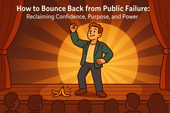
How to Bounce Back from Public Failure: Reclaiming Confidence, Purpose, and Power
Visualization is more than imagination — it’s brain training for resilience. By picturing calm, success, or healing, you activate the same neural pathways as real experience. Learn how daily visualization rewires your brain for confidence, emotional balance, and recovery from stress. ✨
-

Coping with Financial Stress Through Resilience: How to Stay Grounded When Money Feels Tight
Body awareness is the foundation of emotional resilience. By tuning into your body’s signals — tension, fatigue, or calm — you learn to recognize stress before it overwhelms you. Discover how mindfulness, gentle movement, and breathwork can deepen your connection with your body and restore balance from the inside out. 🧘
-

How to Stay Positive During Chronic Illness: A Guide to Emotional Strength and Hope
Creativity is more than art — it’s a form of healing. Whether through painting, writing, music, or small acts of expression, creativity helps release emotion, calm the nervous system, and reconnect you to joy. Discover how to use creativity as a tool for emotional balance, resilience, and self-discovery. 🌿
-
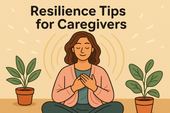
Resilience Tips for Caregivers: How to Stay Strong While Caring for Others
Joy isn’t the absence of pain — it’s the quiet strength to find light even in challenging times. Cultivating joy through small daily moments restores balance, releases stress, and reminds you of life’s beauty. Learn how to reconnect with authentic happiness, rebuild emotional energy, and nurture your nervous system through gratitude, presence, and play. 🌿
-

Building Resilience After a Breakup: How to Heal, Rebuild, and Rise Stronger
Social connection is one of the strongest predictors of emotional resilience. During difficult times, genuine relationships act as anchors — calming the nervous system, reducing stress hormones, and helping you regain perspective. Learn how cultivating real human connection can strengthen your mind, heart, and overall well-being. 🌿
-

How to Stay Emotionally Strong During Job Loss
Your emotions are powered by brain chemistry — a delicate balance of neurotransmitters like serotonin, dopamine, and cortisol. When these chemicals work in harmony, you feel calm, focused, and resilient. Learn how daily habits, nutrition, and mindfulness can support your brain chemistry and boost emotional well-being naturally. 🌿
-

The Role of Hormones in Emotional Stability: How Your Chemistry Shapes Your Calm
Hormones shape more than your body — they shape your emotions, resilience, and sense of calm. From cortisol to serotonin, these chemical messengers influence how you react to stress, connect with others, and recover from challenges. Learn how to balance your hormones naturally to build lasting emotional stability and harmony within. 💫
-

Mitochondria and Emotional Energy: The Cellular Power Behind Your Mood
Breathwork is one of the most powerful tools for emotional regulation and cellular balance. Through intentional breathing, you can calm your nervous system, increase oxygen flow to the brain, and even support mitochondrial energy. Learn how conscious breathing connects body and mind — transforming stress into presence and emotional strength. 🌿
-

Inflammation and Its Impact on Mood Resilience: The Silent Link Between Body and Mind
Inflammation doesn’t just affect the body — it impacts the mind. Chronic inflammation alters brain chemistry, depletes serotonin, and makes emotional recovery harder. Learn how calming inflammation through nutrition, mindfulness, and sleep can restore balance, resilience, and a renewed sense of emotional strength. 💫
-

How Antioxidants Protect Emotional Well-being: The Hidden Link Between Oxidative Stress and Mental Health
Antioxidants do more than protect your body — they defend your mind. By neutralizing oxidative stress, antioxidants support serotonin, dopamine, and brain energy pathways that keep you calm, focused, and emotionally balanced. Discover how foods like berries, green tea, and dark chocolate nourish your brain, boost mood, and strengthen resilience from the inside out. 🌿✨
-

The HPA Axis and Emotional Health: The Hidden Bridge Between Stress and Mind
Neuroplasticity — the brain’s ability to rewire and adapt — is the foundation of emotional healing and resilience. When you face stress, trauma, or change, your neural pathways can reshape themselves to support new patterns of calm, focus, and self-awareness. Learn how daily practices like mindfulness, therapy, and breathwork strengthen neuroplasticity to transform emotional pain into personal growth. 🌸
-

Why Cortisol Control Is Key to Resilience: Mastering Stress to Build Emotional Strength
Controlling cortisol — the body’s main stress hormone — is the secret to lasting resilience. When cortisol levels stay balanced, your mind becomes clearer, emotions steadier, and energy more sustainable. Learn how breathwork, mindset shifts, adaptogens, and daily rhythms can help you calm your stress response and build true inner strength. 🌞💪
-

Dopamine’s Influence on Motivation and Recovery: Reigniting Drive and Balance
Healthy relationships are the foundation of emotional balance and resilience. Whether romantic, familial, or platonic, genuine connection releases dopamine, serotonin, and oxytocin — the brain’s “bonding trio” — helping us feel secure, motivated, and seen. Learn how trust, empathy, and communication not only strengthen your connections but also reshape your nervous system for deeper emotional well-being. 🌿🤝
-
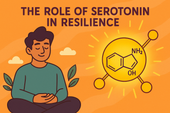
The Role of Serotonin in Resilience: How This “Mood Molecule” Shapes Emotional Strength
Serotonin — often called the “resilience molecule” — plays a vital role in how we handle stress, regulate mood, and recover from emotional challenges. Beyond happiness, this powerful neurotransmitter helps balance the gut-brain axis, stabilize the nervous system, and support emotional flexibility. Learn how nutrition, sunlight, mindfulness, and adaptogens can naturally boost serotonin and strengthen your emotional resilience. 🌞🧠
-

How Neuroplasticity Supports Emotional Growth: Rewiring the Brain for Resilience
Neuroplasticity is the brain’s built-in power to grow, adapt, and heal — and it’s the foundation of emotional transformation. Every mindful breath, compassionate act, or reframed thought strengthens new neural pathways that support resilience and self-awareness. Learn how your brain rewires through daily habits, helping you turn emotional challenges into opportunities for growth and calm. 🌿
-

Tai Chi and Adaptogens for Mind-Body Balance: The Art of Harmonizing Energy and Resilience
Alchemy isn’t just an ancient science — it’s a timeless symbol of transformation and inner balance. By blending the physical and spiritual, alchemy teaches us that change begins from within. Just as metals are refined into gold, we too can transmute emotional pain, stress, and chaos into clarity and strength through mindful practice and self-awareness. 🌙✨
-

Cold Therapy and Emotional Control: Training the Mind Through the Body
Cold therapy isn’t just for athletes — it’s a tool for emotional mastery. By exposing your body to controlled cold, you train your nervous system to stay calm under stress, improving focus, mood, and resilience. This article explores the science of cold exposure, its impact on hormones and the vagus nerve, and how ice baths and cold showers can help you build emotional control, one breath at a time. 🧊🧘♂️
-

How Music Influences Emotional Recovery: The Healing Soundtrack of the Mind
Neuroplasticity — the brain’s ability to rewire and heal itself — is at the heart of emotional recovery. Through mindful habits, music, therapy, and consistent mental stimulation, your brain can form new connections that support resilience and well-being. Discover how neuroplasticity turns pain into growth, helping you rebuild balance, focus, and emotional strength. 🌿
-
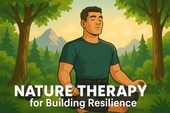
Nature Therapy for Building Resilience: Reconnecting With the Healing Power of the Earth
Nature therapy helps rebuild emotional resilience by reconnecting you with the healing rhythms of the Earth. From forest walks to sunlight exposure, nature restores balance to your nervous system, lowers stress hormones, and teaches emotional adaptability. Learn how spending time outdoors can enhance mental clarity, calm anxiety, and awaken your natural capacity to heal. 🌞
-

Breathwork Techniques That Pair with Supplements: The Ultimate Synergy for Stress Relief and Mental Clarity
Breathwork and supplements create a powerful mind-body synergy for stress relief, focus, and energy. By combining intentional breathing with adaptogens, nootropics, and calming nutrients, you can naturally regulate cortisol, sharpen mental clarity, and boost emotional balance. This guide explores the best breathwork techniques and supplement pairings to help you feel centered, calm, and energized from the inside out. 🌿
-

Why Cortisol Balance Matters for Emotional Strength
Balancing cortisol — your body’s main stress hormone — is essential for emotional resilience. When cortisol is chronically high, your mind stays stuck in survival mode, leading to fatigue, anxiety, and emotional instability. This article explores how nutrition, supplements, breathwork, and therapy can help restore healthy cortisol rhythms, regulate the nervous system, and strengthen your ability to handle life’s challenges with calm focus and emotional strength. 🌿
-

Best Supplements for Students During Exam Season: Focus, Energy, and Memory Support
Studying late into the night? Learn which natural supplements can boost focus, memory, and mental stamina during exam season — without the crash. From omega-3s to Bacopa and Rhodiola, discover your brain’s ultimate exam support stack. 🎓🧠
-

Natural Memory Boosters for Seniors: How to Keep Your Mind Sharp and Focused
Stay mentally sharp and confident as you age. Discover science-backed natural supplements and lifestyle habits that boost memory, focus, and brain longevity for seniors. 🌿🧠
-

The Link Between Stress, Cortisol, and Memory Loss
Chronic stress can quietly erode your memory — and cortisol is the key culprit. Learn how stress hormones affect the brain, why the hippocampus shrinks under pressure, and how natural strategies can help you restore memory and mental clarity. 🧠✨
-

How to Build a Daily Supplement Routine for Memory Health
Want to sharpen your memory and stay mentally clear? Learn how to build a daily supplement routine for memory health — from morning focus to nighttime brain repair. Discover science-backed nutrients that boost recall, focus, and long-term cognitive resilience. 🧠🌿
-

Top 5 Natural Supplements for Memory Recall and Focus
Looking to boost memory and concentration naturally? Discover the top 5 supplements — Bacopa, Ginkgo Biloba, Lion’s Mane, Rhodiola, and Phosphatidylserine — that enhance focus, recall, and long-term brain health. 🧠✨
-

Top Supplements to Balance Mood Naturally
From omega-3s to adaptogens, discover the top natural supplements proven to support emotional balance, reduce stress, and promote inner calm — safely and effectively. 🌿✨
-

Can Omega-3 Fatty Acids Help with Mood Disorders?
Omega-3 fatty acids do more than support heart health — they can help balance mood, reduce depression, and calm anxiety. Discover how EPA and DHA nourish your brain, fight inflammation, and support emotional well-being from within. 🌊🧠
-

Vitamin D and Mood: The Sunshine Vitamin for Emotional Balance
Could the key to emotional balance be as simple as a little sunlight? Discover how vitamin D — the sunshine vitamin — influences serotonin, reduces inflammation, and helps you feel more positive and resilient year-round. ☀️💛
-

The Role of Magnesium in Reducing Irritability and Low Mood
Feeling on edge or emotionally drained? Magnesium could be the missing link between your body and your mood. Discover how this essential mineral reduces irritability, balances neurotransmitters, and helps your nervous system find calm again. 🌿✨
-

How Probiotics Influence Mood Through the Gut-Brain Axis
Discover how probiotics can do more than support your digestion—they can actually uplift your mood. This article explores the fascinating gut-brain axis and how balancing your gut bacteria through probiotics may help reduce anxiety, improve emotional stability, and support long-term mental well-being. 🌿🧠
-

Ashwagandha for Stress and Mood Regulation
Discover how Ashwagandha, the powerful adaptogenic herb 🌿, helps your body manage stress and regulate mood. Learn how it balances cortisol, boosts GABA and serotonin, and supports emotional stability — helping you feel calm, focused, and resilient every day.
-

St. John’s Wort: Natural Support for Mild to Moderate Depression
Discover how St. John’s Wort, the “sunshine herb” 🌼, naturally supports mild to moderate depression. Learn how it boosts serotonin, balances mood, and promotes emotional resilience — with research showing its effectiveness compares to antidepressants, but with fewer side effects.
-
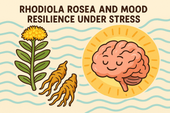
Rhodiola Rosea and Mood Resilience Under Stress
Discover how Rhodiola rosea helps your body adapt to stress 🌿. Learn how this powerful adaptogen balances cortisol, supports serotonin and dopamine, and strengthens emotional resilience — helping you stay calm, focused, and energized under pressure.
-

Chamomile and Lavender: Herbal Calm for Emotional Fluctuations
Discover how chamomile and lavender bring calm to emotional ups and downs 🌿. Learn how these two soothing herbs balance your nervous system, ease anxiety, and support restful sleep — naturally helping you find peace and emotional stability.
-

Saffron Extract and Its Surprising Benefits for Mood Disorders
Discover how saffron extract — the golden spice of joy 🌸 — can naturally support mood balance, ease anxiety, and lift mild depression. Learn what science says about its serotonin-boosting power, the ideal dosage, and how this ancient remedy compares to modern antidepressants.
-

5-HTP and Serotonin: A Natural Path to Lifting Mood
Discover how 5-HTP naturally boosts serotonin 🌞 — the neurotransmitter behind mood, sleep, and emotional balance. Learn how this plant-derived compound supports happiness, reduces anxiety, and improves rest by helping your brain create more serotonin the gentle, natural way.
-

GABA Supplements for Reducing Anxiety and Mood Swings
Discover how GABA supplements can help reduce anxiety and balance mood naturally 🌿. Learn how this calming neurotransmitter works to quiet the mind, ease stress, and improve sleep — plus which nutrients and habits can boost your body’s own GABA production for long-term emotional stability.
-

L-Theanine for Calm Focus and Mood Stability
Discover how L-theanine, the calming compound found in green tea 🍵, promotes focus, relaxation, and mood stability. Learn the science behind how it balances neurotransmitters, reduces stress hormones, and enhances clarity — helping you stay centered, calm, and productive without sedation.
-

B Vitamins and Brain Chemistry: Supporting Energy and Emotional Balance
Discover how B vitamins power your brain chemistry ⚡. Learn how B6, B9, and B12 support serotonin, dopamine, and energy production — helping boost focus, mood, and emotional balance. From diet to supplements, explore how this vital nutrient group keeps your mind resilient and your energy steady.
-

N-Acetyl Cysteine (NAC) and Mood Disorders: What the Research Says
Learn how N-Acetyl Cysteine (NAC) supports brain health and mood balance 🧠. Discover how this antioxidant helps reduce oxidative stress, regulate glutamate, and improve emotional stability in depression, bipolar disorder, and anxiety — backed by cutting-edge psychiatric research.
-

Supplements for Bipolar Disorder: What May Support Stability
Discover the best supplements for bipolar disorder 🌿 that may support emotional stability and brain health. Learn how nutrients like omega-3s, magnesium, vitamin D, and NAC can help reduce inflammation, balance neurotransmitters, and complement traditional treatment safely.

















































